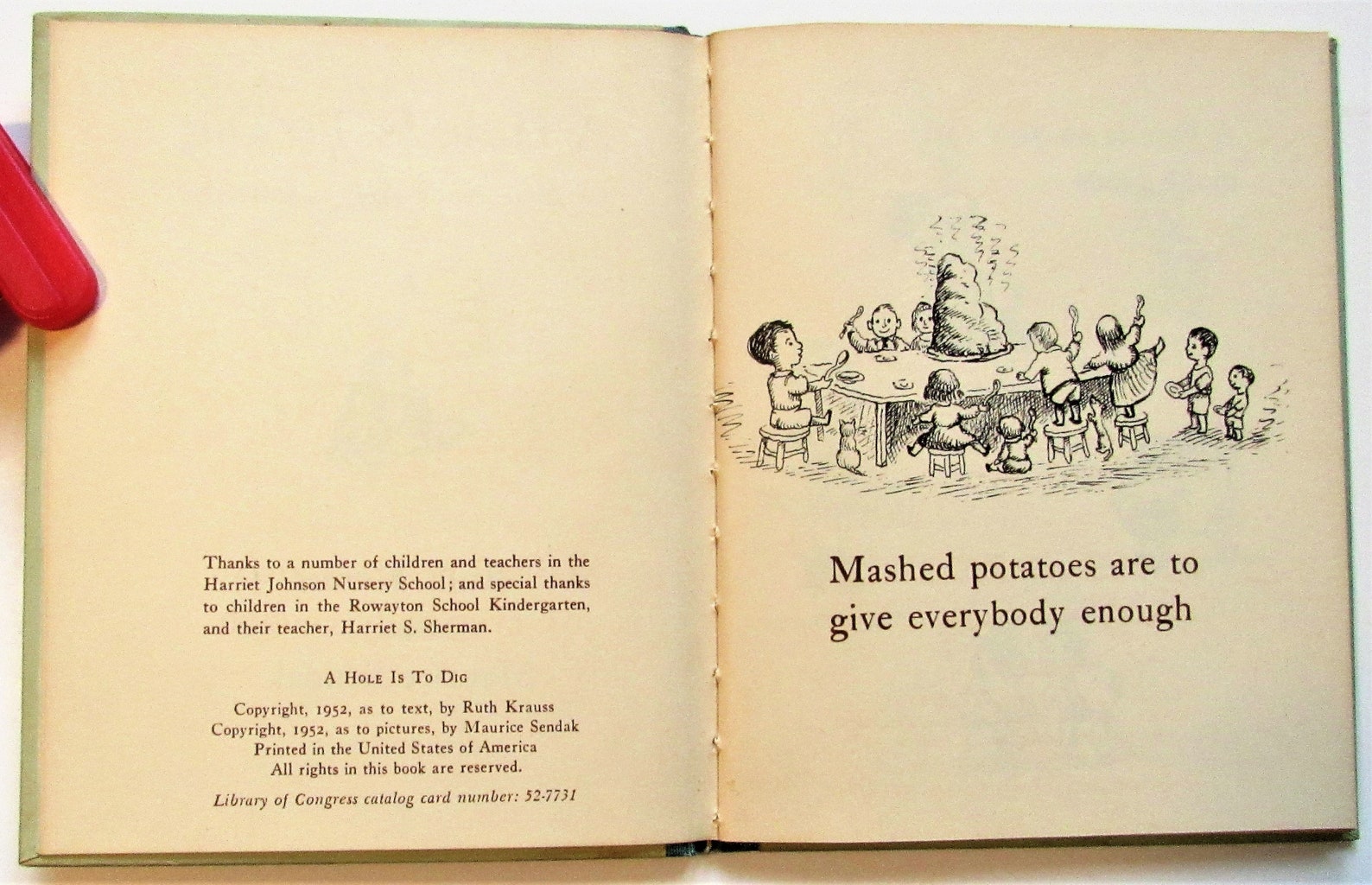


"Ruth Krauss's intuitive ability as a writer to capture the free-spirited thought processes and laughter of young children ensures her books' widespread acceptance and timeless appeal." So concludes her entry in children's Books and Their Creators (1995). I am in danger of dislocating my shoulder my arm is so far up.Īll references in italics from, A hole is to dig, Ruth Krauss – words and Maurice Sendak – pictures, 1952.Ruth Krauss (1901-1993) is the author of over thirty books for children, including the classics The Carrot Seed, illustrated by her husband, Crockett Johnson, and A Hole Is to Dig, illustrated by Maurice Sendak. They also show you that your own nature can be concealed from yourself, but only for a little while.Ī hand is to hold up when you want your turn This is the great value of philosophy, and of children’s books, whether written by philosophers or not, they show you what you are. Unable to see how my own thinking was limiting me. It has caused me to wonder over and over, what am I for? What is my purpose? What am I doing? It has been rising to the surface of my mind almost daily. I have been unable to shake the fragment ‘a hole is to dig’. However, this little book is the perfect example of the theory of ‘artifacts’, or things are defined by their function. This is, a rather computational, rational and logic based sort of philosophy. What something is for, what it is good for, is sufficient to explain what it is. ‘A hole is to dig’, ‘a face is for making faces’. From a philosophical point of view, this beguiling children’s book provides a breathtakingly simple and elegant example of what are called ‘artifacts’ and their functions.

It is sub-titled ‘A First Book of Definitions’. Ruth Krauss’s work A hole is to dig with Maurice Sendak’s beautiful illustration has stayed deep inside my mind since childhood. As a philosopher, and after a month’s reflection, I now know this isn’t good enough. There are many people for whom this never becomes clear. There are many philosophers for whom this is an entire life’s work and writing. There was a lack of clarity about what I was becoming. The philosophical view of this could be that my purpose wasn’t clear. It had called me, and I had turned my face into the wind, to drown the calling shout.

I wasn’t working at full capacity and I’d convinced myself that it was freeing me up to write. I’d been working and writing, with some mothering on the side, but none of it was going well, except the mothering, that was pretty good. Sometimes you don’t know what you want, you don’t know what things are for and you certainly don’t know what you are actually doing.


 0 kommentar(er)
0 kommentar(er)
